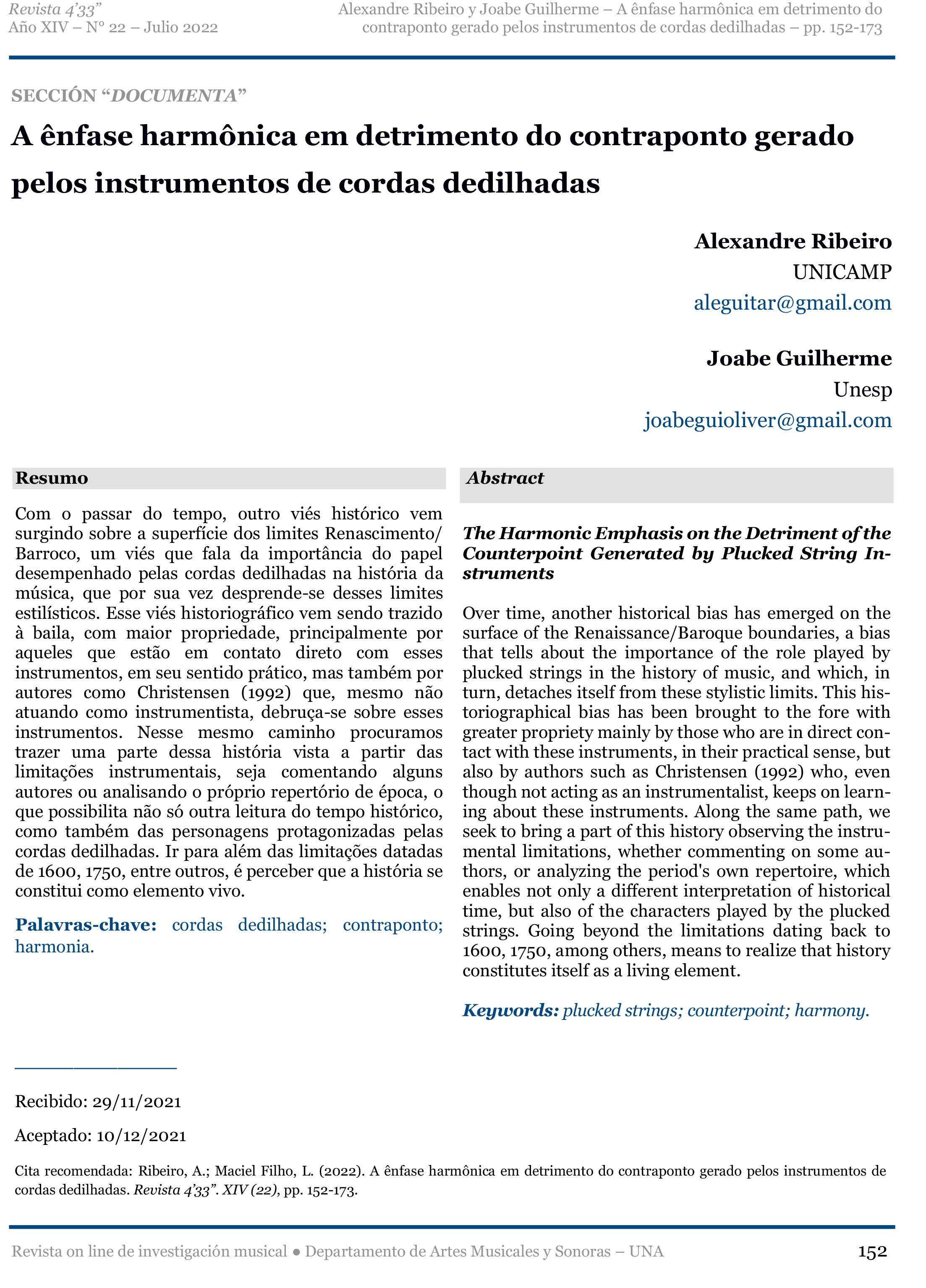A ênfase harmônica em detrimento do contraponto gerado pelos instrumentos de cordas dedilhadas
Palabras clave:
cordas dedilhadas, contraponto, harmonia, plucked strings, counterpoint, harmonyResumen
Com o passar do tempo, outro viés histórico vem surgindo sobre a superfície dos limites Renascimento/ Barroco, um viés que fala da importância do papel desempenhado pelas cordas dedilhadas na história da música, que por sua vez desprende-se desses limites estilísticos. Esse viés historiográfico vem sendo trazido à baila, com maior propriedade, principalmente por aqueles que estão em contato direto com esses instrumentos, em seu sentido prático, mas também por autores como Christensen (1992) que, mesmo não atuando como instrumentista, debruça-se sobre esses instrumentos. Nesse mesmo caminho procuramos trazer uma parte dessa história vista a partir das limitações instrumentais, seja comentando alguns autores ou analisando o próprio repertório de época, o que possibilita não só outra leitura do tempo histórico, como também das personagens protagonizadas pelas cordas dedilhadas. Ir para além das limitações datadas de 1600, 1750, entre outros, é perceber que a história se constitui como elemento vivo.
ABSTRACT
The Harmonic Emphasis on the Detriment of the Counterpoint Generated by Plucked String In-struments
Over time, another historical bias has emerged on the surface of the Renaissance/Baroque boundaries, a bias that tells about the importance of the role played by plucked strings in the history of music, and which, in turn, detaches itself from these stylistic limits. This his-toriographical bias has been brought to the fore with greater propriety mainly by those who are in direct con-tact with these instruments, in their practical sense, but also by authors such as Christensen (1992) who, even though not acting as an instrumentalist, keeps on learn-ing about these instruments. Along the same path, we seek to bring a part of this history observing the instru-mental limitations, whether commenting on some au-thors, or analyzing the period's own repertoire, which enables not only a different interpretation of historical time, but also of the characters played by the plucked strings. Going beyond the limitations dating back to 1600, 1750, among others, means to realize


